If you're new to drones, you're probably going to want to learn the ropes with a smaller and more manageable device, like a mini drone. The good news is that there are quite a few options out there, and these palm-sized devices pack quite a punch. To help you make a well-informed decision, we're going to discuss the following 10 best mini drones and why you should consider them:
- The Ryze Tech Tello
- Mavic Mini Drone
- Spark: Selfie Drone
- Hover Passport
- DJI Mini 2
- UVify OOri
- Hubsan H502S Desire
- U49WF FPV Camera Drone
- RUKO F11Pro Drone
- Potensic A30W RC Mini Quadcopter
The Best Mini Drones Reviewed
1. The Ryze Tech Tello

Measuring 6 x 6 x 1.3 inches and weighing under 3 ounces, the Tello is one of the smallest drones out there and does not require FAA registration. One of its most impressive features is the 5 MP camera that can record 720p videos.
Considering this drone costs under $100, the camera and EIS or electronic image stabilization features are not what you would expect to find in a drone at this price range.
Standard drones make use of a gimbal to stabilize video, but mini drones like these that do not have room for it, make use of Electric Image Stabilization-EIS. This feature works exceptionally well on this device and delivers smooth footage that you will be proud to share with family and friends.
Another feature that separates Tello from the competition is the various flight modes. Using the "Up and Away" mode, the Tello will fly away from you and slowly gain altitude while keeping you in the center of the video. The "Circle" mode sends the drone into an orbit, and it will circle its subject while keeping it in the frame at all times.
It also contains impressive stability for a non-GPS mini drone and an excellent flight time of 13 minutes. However, it only supports a range of 100 meters, which is probably the only drawback with the Tello.
2. Mavic Mini Drone
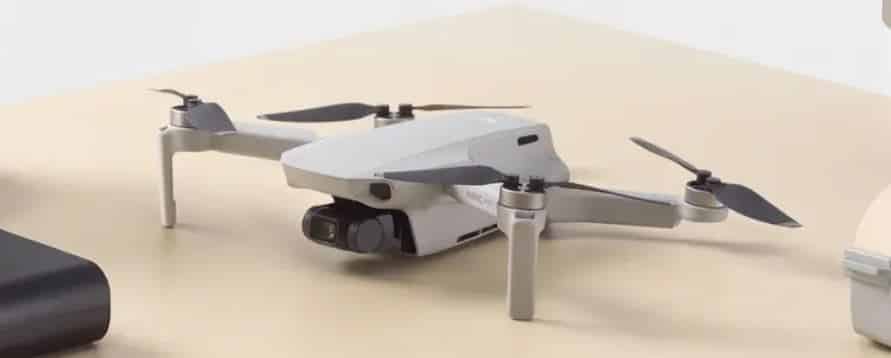
The Mavic Mini is essentially a smaller version of other Mavic drones. Weighing 8.8 ounces or 249 grams, it's just a gram short of requiring FAA registration. It's also lighter than the DJI Spark, which is another smaller drone developed by the company.
It's small and compact enough to fit into the palm of your hands or your backpack, for that matter, making it portable. However, just because you don't have to register it with the FAA does not mean that you can fly it anywhere. It still adheres to the FAA rules and regulations for drones.
Flying the mini drone in heavy winds is not recommended due to its size and also weight limitations. In clear and sunny skies, it remains remarkably stable and gives the pilot fantastic control. The mini device contains collision avoidance sensors keeping it from crashing into objects.
It is not the fastest drone out there, with a maximum speed of 29 miles per hour, but what it lacks in speed, it makes up for with the 3-axis gimbal-mounted camera that provides stable images and video. The 1/2.3 inch sensor shoots 12 MP pictures and 2.7K videos at 30 frames per second, which is not as impressive as other Mavic drones, so there are some obvious trade-offs.
This mini drone has an impressive flight time and battery life of 30 minutes, provided you're flying it in typical clear skies. Heavy winds are sure to drain battery life as the drone struggles to stay in position.
3. Spark: Selfie Drone

One of the most impressive features of the Spark Selfie drone is that it can be flown exclusively simply using hand gestures.
The DJI drone is priced at $499 and is one of the lightest, smallest and more affordable drones by this company. If you're searching for a drone to capture hilarious or spontaneous moments, this palm-sized solution is for you.
Just imagine being able to launch, fly and control your drone without a separate controller or even smartphone, for that matter.
It is launched from the palm of your hand and then waits for your hand gestures to manoeuvre up, down, left or right. You may also use your hand gestures to have the drone fly further away and snap a shot. The range on this drone is 100 yards, and it flies up to 1.2 miles away.
The device is equipped with a 1/2.3 inch sensor, which shoots 12 MP images and video in 1080p at 30 fps thanks to the mounted 2-axis gimbal. Considering it is half the price of other drones by DJI, these specs are modest and worth the investment.
Battery life is an estimated 16 minutes which is reasonable, and it contains autonomous flight modes.
4. Hover Passport
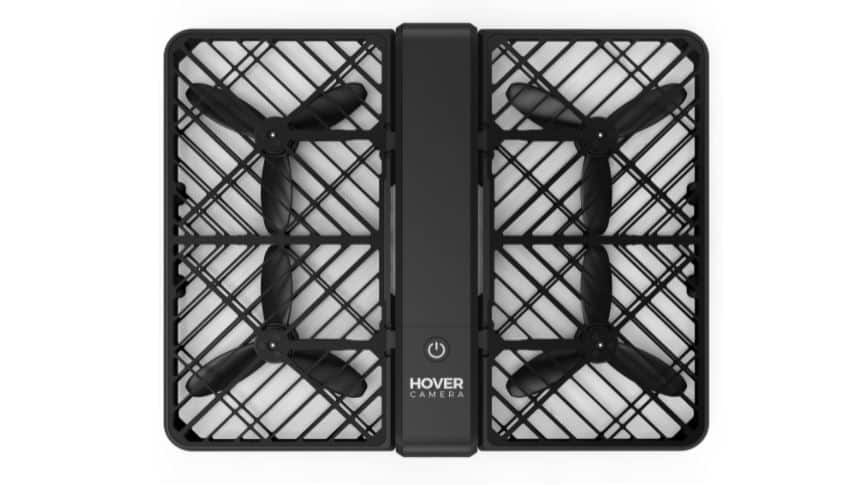
The Hover Passport is one of the easiest drones to use. Taking photos is a breeze thanks to the gesture control feature, and you simply need to throw it in front of you, and it will fly in place.
Flying at 17 MPH, it's not the fastest drone out there, but for its size, it does pack a punch.
Considering this is a mini drone, you wouldn't expect to find a camera capable of 4K images and videos at 30 fps, but with the Hover, that's what you get.
The flight time of 10 minutes is more than you can expect from a drone this size, and the range of 65 feet is also reasonable.
Ultimately, this is a self-flying, pilot-friendly mini drone that is highly portable. The bonus is that it contains embedded AI technology and facial recognition that allows it to fly autonomously.
5. The DJI Mini 2
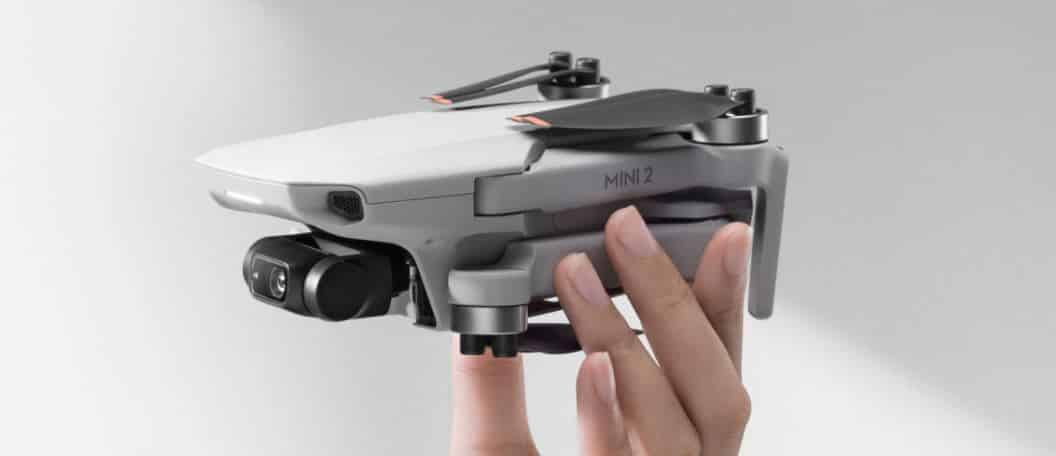
The DJI Mini2 is a small drone weighing 249 grams and contains a 2250mAh battery providing you with 31 minutes of battery life after a single charge. It's also capable of a 10km range or 6.2 miles of flight at 57kph.
Considering the small size, it is still equipped with features offering 12MP images and 4K videos at 30 fps. One of the reasons why mini drones like these are sought after is because drones weighing over 250 grams require FAA registration.
The DJI Mini drone solves this issue and is packed with even more features than its predecessor, the Mavic Mini. The fact that it is so lightweight ensures it is easy to travel with, while the 3-axis gimbal absorbs almost all turns and twists in flight. The new remote control also makes control a breeze, and concerns about range are eliminated.
For the price, the images that it can conjure up are priceless, and even novice pilots are able to fly like pros. The safety features are also quite neat, and it comes with an easy-to-follow instruction manual.
6. UVify OOri
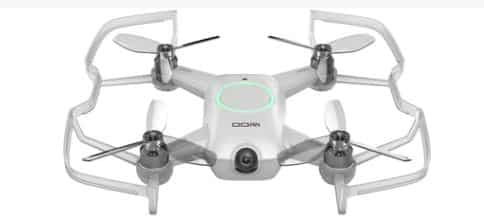
The UVify drone can reach over 50MPH in the event you want to win a race, but it is slow and steady enough if you just want to practice in your living room. It's also lightweight and agile enough for professional pilots as well as hobbyists and novices.
The bonus is that it is a less expensive drone as compared to many others with a heftier price tag. Weighing only 75 grams, it is one of the smallest and lightest drones out there. Battery life is 5 minutes which is not very impressive, and it contains a basic FPV camera, so don't expect to capture 4K or 6K images or videos on this one.
It does, however, have a 500 ft range which is pretty decent for a drone this size and at this price point. The drone is designed for those who enjoy racing, and with all of the basic features built-in, it is a great mini drone for a new drone user.
7. Hubsan H502S Desire
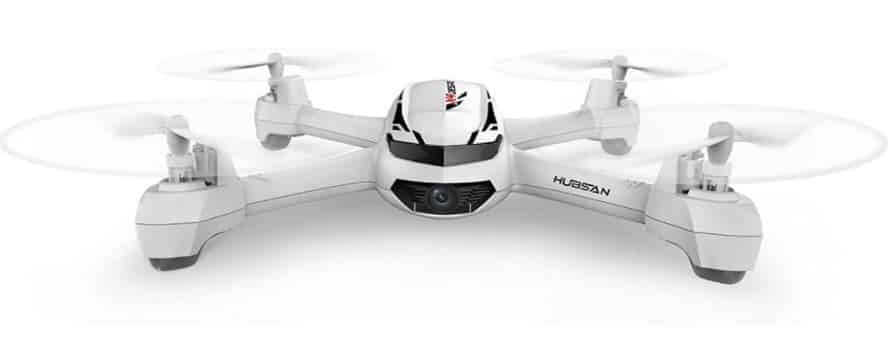
The Hubsan H502S Desire drone is one of the best mini drones on the market. Although initially categorized as a toy drone, it packs some standard features such as basic GPS and flight features like the "Follow me" mode.
Hubsan develops drones with brushless and brushed motors; while this model contains a brushed motor, its speed and efficiency is still modest. It is also stable and tends to hover quite well, while the 720p camera turns your fun flight into an adventure.
Some of its noteworthy specs include 10 minutes flight time, 11 MPH speed, and a range of 300 meters. It's an entry-level mini drone designed for kids, but no rule prevents adults from releasing the child in them when using this neat device.
8. U49WF FPV Camera Drone
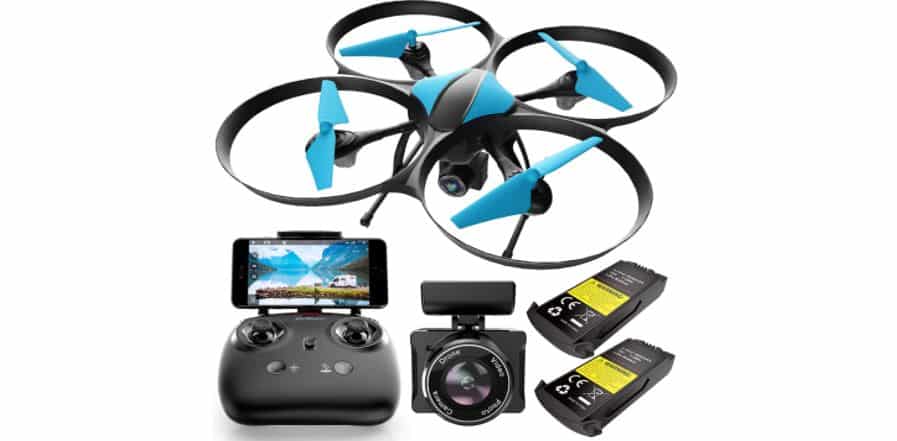
Most of the features found in this mini drone are typically only found in standard-sized drones, which are also priced higher. While it is not the cheapest mini drone on the market, you will see that it is worth every penny once you launch it.
The drone is made from fiber material, and this makes it durable. So no need to worry about it crashing, landing and breaking. As a safety feature, the propellers are also enveloped in protective frames to deter breakage.
This drone has a one-key landing and take-off feature, so by just tapping the relevant button, your drone will either land or take off.
The camera is capable of 720p images and videos as well. So it may not be the best, but it is pretty decent, and you have the option to insert an SD card up to 16GB.
The FPV feature allows you to see whatever your drone sees when viewing the screen on your smartphone.
One very important feature here is the headless mode. This mode signals the drone to come back to the pilot irrespective of which direction the drone is facing. It is now a crucial feature and a compulsory one at that, according to many drone users.
This Force 1 drone also has a fun feature, the 3D roll feature, and allows the drone to carry out 360-degree flips.
9. Ruko F11 Pro
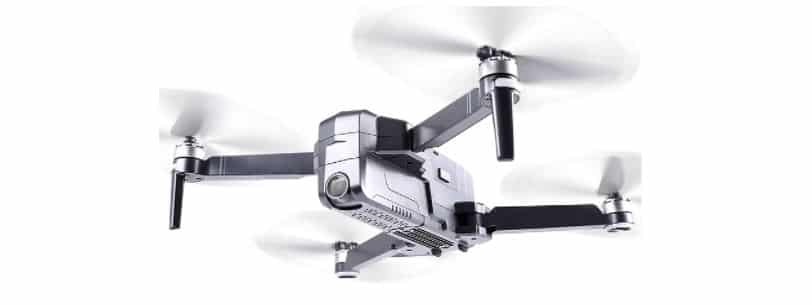
The compact design will grab your attention, but after that, you're in for a surprise. This tiny device packs a punch when it comes to features and specifications that until now were only found in standard-sized drones.
For one, it has an impressive flight time of 30 minutes on a full charge. This is credited to the 2500mAh intelligent battery.
The Ruko drone has a 1.2km range, but when using the live video transmission functionality, this is reduced to 500 meters.
Even though it is small, the brushless motors help keep it sturdy in the air, including the much-needed return to home function. The maximum flight speed is 26.8 MPH, and the brushless motors also reduce and prevent overheating.
For a mini drone, the UHD 4K camera is quite impressive and shoots 2.7K videos. The details in your footage are enhanced thanks to the 120-degree field view.
Perhaps one drawback is that the camera does not have a gimbal stabilizer, as is the case with most mini drones, because there simply isn't enough room for it.
So at the price point, the drone is easy to operate, with durable construction and features that are all high end making it a fabulous buy.
10. Potensic A30W RC Mini Quadcopter
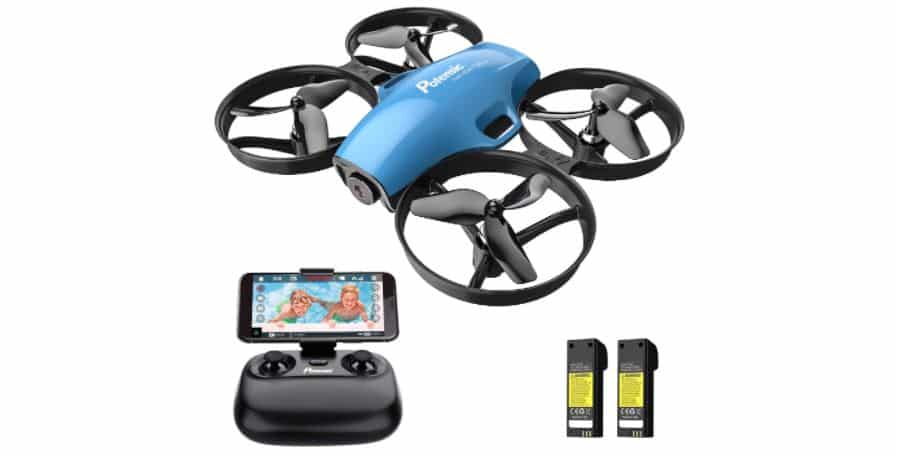
This mini quadcopter is designed for beginners or primary users who are new to drones. The stylish drone comes in the color red and has a sleek appearance. It also contains robust ABS plastic propeller guards for safety, and this makes it resilient to crashes and, of course, impact since the guards absorb shock.
The Potensic drone also has a built-in 720p camera which you may connect to your mobile device and enable FPV mode.
Weighing just 63 grams, it's one of the tiniest drones on the market that easily fits in your travel case or backpack for easy transportation. The upgraded 9-axis gyroscope offers stability and accurate flight controls, while the drone uses brushless motors for added stability.
If you are a beginner pilot, the varying speed modes will allow you to gradually gain traction as you practice.
The Potensic drone can also perform some neat aerial tricks like 360-degree flips in various directions. In the event your drone is out of range, the built-in alert system will notify you. There are also alerts for when the battery is critically low. Headless mode and altitude mode are other beginner-friendly features that are a must-have.
Does Size Matter?
Have you ever wondered if there really is any other difference between a mini drone and a full-sized one, aside from their size? Well, so have we and today, we're going to tackle that answer and help you understand what size drone you should be using, based on your needs.
How To Decide On Drone Size
Some of the questions you should be asking yourself before purchasing a drone are what you will be using it for, where you will be flying it, and preparing to carry a heavy drone at all costs.
There are other factors to consider before choosing a done size, like whether you'll need to fit it into a bag and whether battery life is a concern.
Another key factor in drone size is the FAA. Yes, they do not allow pilots to fly drones that are 55 pounds or more. Neither are you permitted to carry a payload of this weight or more.
Payload is a key factor as it determines the type and size of camera you can mount on your drone.
Location is crucial as well. This is because you need to know where you will be using the drone for the best results. A drone that is too big may crash indoors, causing a hell of a mess, and a drone that is too small and lightweight, taken outdoors on a windy day, may just fall off a cliff or fly away, no pun intended.
A point to note is that while the FAA places restrictions on weight, they do not have any rules against the size of the drone you may fly. So if you can find a drone that weighs under 55 pounds and is as big as a horse, then by all means, there is nothing stopping you from making it airborne.
Which Is Best?
Mini drones have lots of advantages over big drones, such as being lighter, smaller and more compact. This means they are easily transported and fit into most bags. However, the lightweight and compact size do come at a cost.
For one, small drones are not equipped with many of the premium features, tools and benefits that large drones come with. So you must be willing to sacrifice some top features and specifications in exchange for the portability of small drones.
While large drones are typically more expensive than smaller ones, let's take a closer look at the bang you are getting for your buck.
Longer Flight Time
Large drones have a longer flight time as compared to mini drones. This is usually because the battery is bigger and stronger. Some large drones have a flight time close to an hour, while it is hard to find a mini drone that can stay airborne for longer than 10 minutes. So this is one of the trade-offs of mini-drones.
Better Quality Camera
Big drones typically have better cameras providing superior picture and video quality as compared to mini drones. Their large size also ensures that they are compatible with gimbals. So not only do you have the option of mounting a gimbal, which most mini drones do not, since there isn't enough space for it, the lack of the gimbal leads to less stability while using the drone.
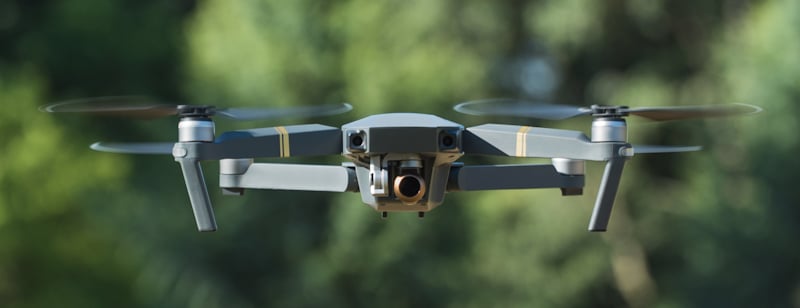
Large Drones Are Not Easily Blown Away
Larger drones are naturally heavier, which means they remain steadfast in the air. They are not as easily blown away in windy weather conditions as small drones and therefore eliminate these concerns when flying outdoors. So while small drones should only be flown in clear skies, a big drone may hover longer in windy weather.
So, in a nutshell, big drones have much more to offer than mini-drones simply because smaller drones do not have room for many of the features, specs and tools that are not included in them.
However, big drones do usually cost more than small ones, and if you are new to flying drones, we recommended that you start with something smaller and more affordable to get the hang of things, and once you've gained momentum, you may always upgrade to a larger and more expensive drone.
Mini drones are also the best bet for children since they are much easier to navigate during clear skies and lightweight enough for your children to carry around. They are also cheaper, so if your kid breaks one, which is usually how it works after a while, it won't break the bank to replace it.
The Verdict
The sheer amount of options out there when it comes to drones will leave you overwhelmed. However, by knowing the exact purpose of the drone and where you will be using it, you can narrow down your options.
At the end of the day, who will be using it is another important consideration as mini drones are best suited to children, while big drones have all the features and specs that adults want. If you want to use a drone for business purposes such as aerial photography, then naturally, you should go for a drone with a great camera and video recording functionality.
So do your due diligence and make a well-informed decision before making your purchase. This will ensure that you do not suffer buyer's remorse and enjoy your aerial device for years to come.
Also, take note to brush up on the rules and regulations in line with the FAA so you may enjoy a pleasant and uninterrupted session each and every time.
Shawn Manaher loves to play with new toys and dive into new hobbies. As a serial entrepreneur, work definitely comes first but there is always room for hobbies.

![What Are The Best Mini Drones For 2021? [ANSWERED]](https://hobbynation.net/wp-content/uploads/2021/04/what-are-the-best-mini-drones-720x405.jpg)